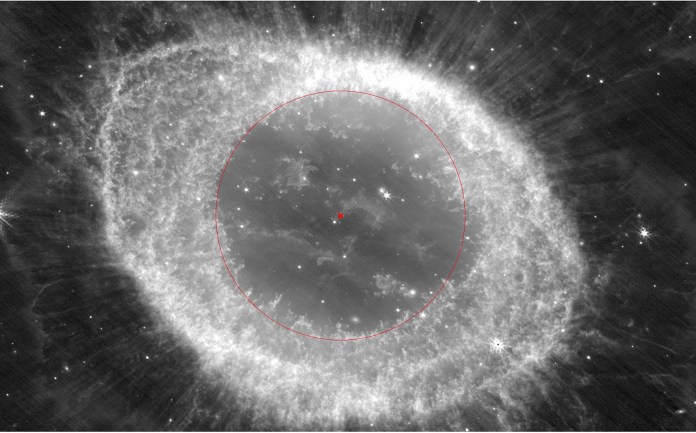Sign up for the Starts With a Bang newsletter
Travel the universe with Dr. Ethan Siegel as he answers the biggest questions of all
Whenever a star is born, it expectantly follows a specific life cycle.

This Hubble Space Telescope image of open star cluster NGC 290, showcases a region where thousands of newborn stars were created 30-60 million years ago. They come in a wide variety of masses, where a combination of their initial mass and future interactions will determine their ultimate fates.
Stars are hot, dense balls of gas and plasma.

This cutaway showcases the various regions of the surface and interior of the Sun, including the core, which is the only location where nuclear fusion occurs. As time goes on and hydrogen is consumed, the helium-containing region in the core expands and the maximum temperature increases, causing the Sun’s energy output to increase. The balance between the inward-pulling gravity and the outward-pushing radiation pressure is what determines the size and stability of a star, while the core temperature determines the rate of fusion and which elements can fuse inside.
Inside their cores, nuclear fusion occurs: fusing light elements into heavier ones, liberating energy.

The most straightforward and lowest-energy version of the proton-proton chain, which produces helium-4 from initial hydrogen fuel. Note that only the fusion of deuterium and a proton produces helium from hydrogen; all other reactions either produce hydrogen or make helium from other isotopes of helium. This reaction set occurs in the interiors of all young, hydrogen-rich stars, regardless of mass.
Ultimately, all stars of all masses exhaust their core’s hydrogen: fusion’s primary fuel source.

After its formation some 4.6 billion years ago, the Sun has grown in radius by approximately 14%. It will continue to grow, doubling in size when it becomes a subgiant, but it will increase in size by more than ~100-fold when it becomes a true red giant in another ~7-8 billion years, total, all while growing in brightness by a factor of at least a few hundred.
For stars like the Sun (or more massive), the star evolves: swelling into a red giant.

As the Sun becomes a true red giant, expanding to over 100 times its current size as its interior contracts and heats up to fuse helium, the Earth itself may be swallowed or engulfed, but will definitely be roasted as never before. The Sun’s outer layers will swell, but the exact details of its evolution, and how those changes will affect the orbits of the planets, still have large uncertainties in them. Mercury and Venus will definitely be swallowed by the Sun, but Earth will be very close to the border of survival/engulfment.
Meanwhile, hydrogen burning continues in a shell surrounding the core.

When a main sequence star, like the Sun, runs out of hydrogen in its core, its core becomes inert and the star expands into a subgiant, while hydrogen fusion continues in a shell surrounding the core. Eventually, the core contracts and heats up, where it can initiate helium fusion if the star’s core gets hot enough, which will only happen for sufficiently massive stars.
Eventually, the contracting core heats up sufficiently to fuse helium.

The prediction of the Hoyle State, an excited state of a carbon-12 nucleus, and the discovery of the triple-alpha process is perhaps the most stunningly successful use of anthropic reasoning in scientific history. This process is what explains the creation of the majority of carbon that’s found in our modern-day Universe: created in the hearts of evolved stars that fuse helium into carbon. The work of Hoyle, Fowler, and the Burbidges demonstrated that carbon was created via the process of stellar nucleosynthesis, rather than during the hot Big Bang.
And then, critically, the giant star’s core runs out of helium fuel.

This illustration shows a red giant star undergoing a helium ignition event: where a thin shell-like layer surrounding the star’s inert core undergoes a helium ignition event, which can precede the star’s evolution into an asymptotic giant branch (AGB) star.
For very massive stars, carbon fusion initiates, usually leading to a core-collapse supernova.

Artist’s illustration (left) of the interior of a massive star in the final stages, pre-supernova, of silicon-burning. (Silicon-burning is where iron, nickel, and cobalt form in the core.) A Chandra image (right) of the Cassiopeia A supernova remnant today shows elements like iron (blue), sulfur (green), and magnesium (red). Ejected stellar material can glow due to heat in the infrared for tens of thousands of years, and the ejecta from supernovae can be asymmetric and can have segregated elements within it, as shown here. In the right environment, this asymmetric material can be unevenly incorporated into future generations of stars.
But for lower-mass, Sun-like stars, they enter the AGB (asymptotic giant branch) phase.

After evolving off of the main sequence (not shown), stars with similar masses and metallicities to the Sun evolve into subgiants, then true red giants, then evolve along the horizontal branch until they reach the red clump and run out of helium in their cores, where they travel along the asymptotic giant branch (AGB), where they pulse and blow off their outer layers in a post-AGB stage. Under most circumstances, this should create a white dwarf/planetary nebula end state.
Helium-burning and hydrogen-burning shells surround an inert carbon-oxygen core.

Once a star has fused the helium in its core fully, an inert carbon-oxygen core arises, with helium burning in a shell around it and hydrogen burning in a shell around that. If the star is greater than about 7-8 solar masses, carbon fusion can initiate, but if not, the star will enter the AGB (asymptotic giant branch) phase, on its way to dying in a planetary nebula/white dwarf combination.
The helium shell runs out of fuel first: leading to flashes and pulses.

During the asymptotic giant branch (AGB) stage, a star pulsates and exhibits strong winds, blowing off the outer layers and creating copious amounts of dust that surround the star in a circumstellar halo. If this halo gets ionized when the star’s central core becomes a white dwarf, it will create a planetary nebula.
Thermal pulses and stellar winds disrupt the stellar envelope, causing mass loss and ejections.

When lower-mass, Sun-like stars run out of fuel in their cores and shells, they blow off their outer layers during the AGB and post-AGB phases. Stars can lose anywhere from 50-80% of their mass during these stages. Eventually, when the center contracts down to form a white dwarf, the circumstellar ejecta will become ionized, which will create a planetary nebula.
(Credit: NASA/ESA and the Hubble Heritage Team (AURA/STScI))
Finally, the remnant, non-ejected core contracts, becoming a hot white dwarf.

Based solely on JWST data, tracing out the brightest portion of the Ring Nebula points to a central location that’s offset from the white dwarf remnant. This mismatch potentially indicates the presence, and location, of a faint companion star. Despite the Ring Nebula’s apparent shell-like appearance, its structure is more complicated, further suggesting a binary companion’s presence. Singlet stars, like our Sun, are thought to generally create much fainter planetary nebulae.
Emitted ultraviolet light ionizes the circumstellar ejecta, creating a shining planetary nebula.

When our Sun runs out of fuel, it will become a red giant, followed by a planetary nebula with a white dwarf at the center. The Cat’s Eye Nebula is a visually spectacular example of this potential fate, with the intricate, layered, asymmetrical shape of this particular one suggesting a binary companion. At the center, a young white dwarf heats up as it contracts, reaching temperatures tens of thousands of Kelvin hotter than the surface of the red giant that spawned it. The hottest young white dwarf surfaces reach ~150,000 K.
Unless:

When an orbiting body enters the photosphere of a massive star, the star will swell in size and brighten substantially, but will also cease spewing out dusty material; that was only a part of the pre-merger phase of the astronomical system in question. Stars often grow by mergers into more massive, shorter-lived stars.
- or significant mass siphoning,

When two stellar objects orbit one another, it will be the denser object, even if it’s smaller and/or less massive, that has the capability of siphoning mass off of its companion. If the Sun acquires another massive companion, or if Jupiter can be a much more efficient siphon than expected, the Sun’s outer layers could be captured or ejected, preventing the formation of a planetary nebula. This scenario is not anticipated to occur.
Credit: K. Ulaczyk / Warsaw University Observatory

This illustration of a tidal disruption event shows the fate of a massive, large astronomical body that has the misfortune of coming too close to a black hole. It will get stretched and compressed in one dimension, shredding it, accelerating its matter, and alternately devouring and ejecting the debris that arises from it. A chance encounter with a black hole could prevent an evolved star from creating a planetary nebula/white dwarf combination.
Credit: ESO/M. Kornmesser
occurs, the Sun will ultimately form one.

Around a variety of stellar corpses and dying stars, doubly-ionized oxygen atoms produce a characteristic green glow. Here, the planetary nebula IC 1295 shines brilliantly. Although massive binary stars produce the most visually spectacular planetary nebulae, any circumstellar ejecta that becomes ionized due to ultraviolet radiation from a central white dwarf will technically create a planetary nebula, including singlet, low-mass stars like our Sun.
Credit: ESO
Ethan acknowledges Dr. Eva Villaver and Dr. Kirk Korista for providing valuable information concerning stellar evolution and the fate of the Sun.
Mostly Mute Monday tells an astronomical story in images, visuals, and no more than 200 words.
Sign up for the Starts With a Bang newsletter
Travel the universe with Dr. Ethan Siegel as he answers the biggest questions of all
